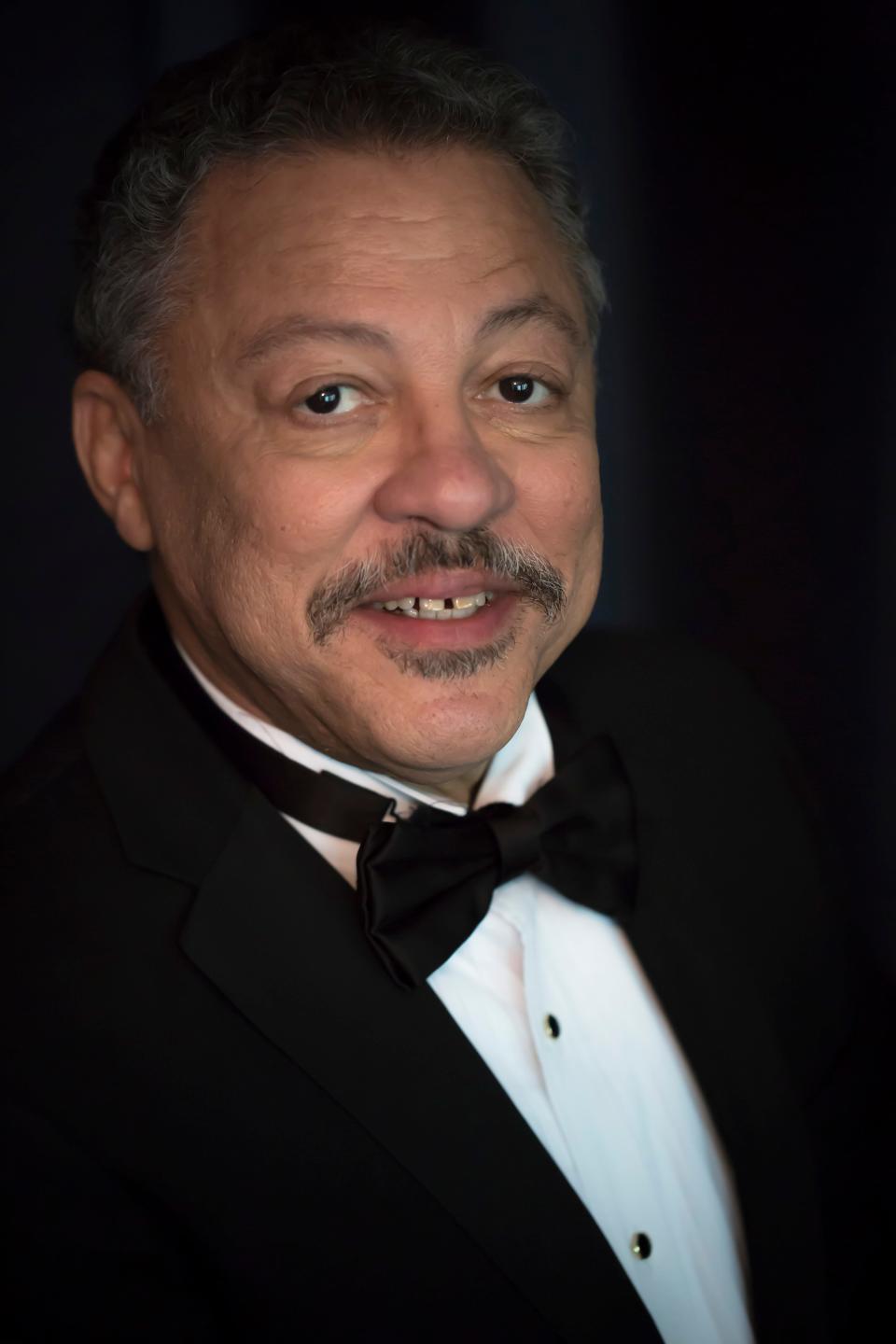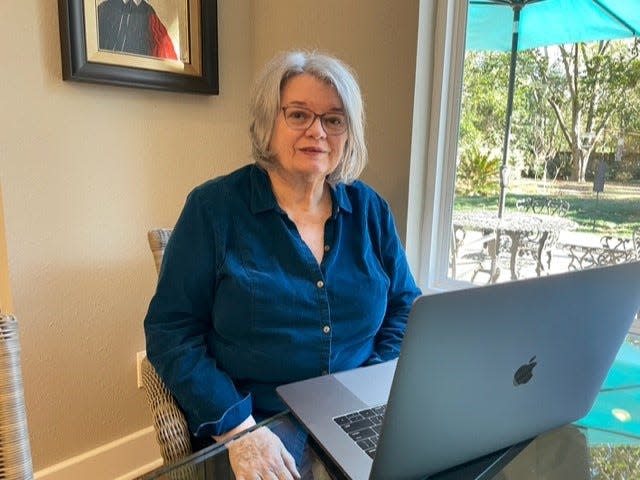A doctor, blood and the human spirit: Black History Month opens with a song
- Oops!Something went wrong.Please try again later.
Raise your hand if you’ve ever heard of Dr. Charles Drew. Or if you or a loved one has ever needed a pint of blood.
Raise your hand if you’ve ever had the sudden realization that there is unfairness in the world. And raise it higher when you see the heights to which the human spirit can climb.
And then — turn it all into song.
Cellist:Musical destiny: Classical cellist revisits Beethoven basics for Javacya Arts concert
Nominations open:25 Women You Need to Know for 2023: It's time to nominate talented Tallahassee achievers
Jazz Fest:Bainbridge brewery serves as hub for 2023 Jazz & Blues Fest | Brew Bend
Blood, a doctor, the human spirit, and a song? What do these things have in common as we mark Black History Month? According to renowned musician and teacher Longineu Parsons, lyricist Linda Harkey, and vocalist Avis Berry, the injustices that pervaded the land a generation ago — and which have still not been resolved — were the inspiration for a haunting melody created by Parsons 20 years ago, and which will soon find new life.
The death of a respected but now partially forgotten African American doctor was the impetus for Harkey’s words which she set to Parson’s melody. And in a video just released on YouTube, Berry’s voice seems to call out in soaring notes that in the end, “truth can make us one.”
The Doctor
Dr. Charles Drew was born in 1904. Smart and scientifically-minded, he attended the prestigious Amherst College and later McGill University for his medical training. Returning to the U.S., he became an assistant professor in surgery at Howard University, an all-Black school.
It was there that Drew began thinking about the problem of transfusions during surgery. In groundbreaking research, he showed that blood cells could be separated from the plasma in which they floated to allow for storage up to one week, and that plasma alone could be transfused. This was vitally important in that World War II had just begun and with it, soaring requirements for blood.
The United States government noted Drew’s innovations in blood storage and distribution and the American Red Cross tapped him to become their first director of what would be known as the “Blood Bank,” essential in blood drives that would send stored plasma to the Allied Forces.
Today, two things are known about Dr. Charles Drew — one of them true, the other apocryphal, but telling. Just as the United States was about to enter the war, the Red Cross announced that it would begin segregating blood for transfusions. That is, “Black blood for Blacks” and “White Blood for Whites.”
And with that declaration, Dr. Charles Drew resigned his Red Cross directorship, denouncing the decision as repugnant on both moral and scientific grounds. Drew would go on to a further prestigious career, continually lobbying for admission of African American physicians into select medical societies and universities. He died prematurely at the age of 47 in an automobile accident. Those things happened.
Entertainment:Looking for fun things to do? Our Top 5 events in Tallahassee
The Music
Longineu Parsons grew up in the segregated South where he was schooled by African American teachers, learning “at their knees” about values and people to whom he should look up. African American communities were well aware of the injustices around them and such evidence was passed from mouth to mouth — just as when Parsons’ own grandmother was terribly burned in a fire and refused care at the segregated “white” hospital, and later died.
It was not a leap for the admiring Black community upon learning of the famous Dr. Charles Drew’s death, to come to believe that he too had been denied care at a white hospital. That did not happen. And yet, the physician’s contributions, the sadness at his passing, and the injustice he had fought combined for them as one.

It was with that feeling that one night 20 years ago as he sat “playing around with notes on the piano” Parsons says he began to think of Drew, what he gave to the world, and how even his lifesaving instincts were demeaned with the presumption that “Black blood was not worthy.”
What emerged from Parson’s keyboard were melancholy descents of chords, that take us, he says, “into the depths, the places where the bad things we do to each other live.” Using a progression from “Chopin’s funeral march,” Parsons leads us into the darkness. And though the melody does not release the listener, the music seems to ask: “Why does it have to be this way?” “Can we do better?”

The Lyrics
Linda Harkey wrote the lyrics to Parsons’ haunting melody. Harkey, 75, who worked for many years for the state of Florida, has only grown into her artistic skin since her retirement. Always a dealer in words, she says her love of jazz had made her a regular follower of Parsons’ group and others, and over the last years she herself has studied voice and music arrangement.
But it was the surprise discovery of an off-the-beaten-track North Carolina roadside marker memorializing Charles Drew’s life and death that prompted the writing of the lyrics to "Song for Dr. Drew." Harkey had recently heard Parsons play his plaintive melody, and she writes, “The rain that day that in the sunlight turned the dirt to diamonds…and contrasted with what Dr. Drew had experienced… and the words came to me.”
With Parson’s permission, she took her lyrics and the music to Avis Berry, the Tallahassee singer who could perhaps best do justice to the sentiments of the song.

The Song
The peripatetic Avis Berry, with her FSU Master's in Library Science and in Elementary Education, plus a Bachelor's in Vocal Performance, currently holds down two full-time jobs as an elementary school teacher and librarian at the FSU School of Music.
But her performance life after work is just as full. Her lush vocal arrangements ranging from gospel to jazz can be heard in person across Florida as well as on Spotify, Apple, and Sound Cloud.
Offered up by Berry’s uniquely powerful and soulful voice it seems that each song she interprets has been touched with a special magic.
"Truth can make you stand alone," Berry said of the song. “Because, as I understand it, that was a pivotal point in Dr. Drew's timeline. Linda Harkey’s imagery and Longineu's beautiful composition supported me as I interpreted this song about truth and the courage it takes to stand in your own truth, sometimes as a "lone nourished seed."
And watching Berry sing the final words, ”in truth, we are one” we too seem to understand the sad, but hopeful, trajectory of a life of Dr. Charles Drew, one that benefited so many. As Berry herself has said, “We have to consider our time together sacred, because we don’t have a lot of it.”
"Song for Dr. Drew," the video, can be seen at youtube.com.
Song for Dr. Drew
Truth is a surprise,
A pale star in stormy skies.
People full of fear
Cannot see and hear
Plain and simple truth.
But you see we are one.
Torrents turn red clay to mud
Rivers pound like our life blood
Hate’s uprooted weed
Truth’s lone nourished seed
Travel on the flood
As far as rivers run
Your heart knows we are one.
Golden light
Streams over rain-soaked fields
Your mind never yields
To coldness or to care
You just see what’s there
Truth can make you stand alone.
Soft full moon
In mist shines on the trees
Clouds fly on the breeze
Frogs sing and crickets bark
The night is bright and dark
In truth, we are one
- Linda Harkey
This article originally appeared on Tallahassee Democrat: Tallahassee artists open Black History Month with song for a doctor

